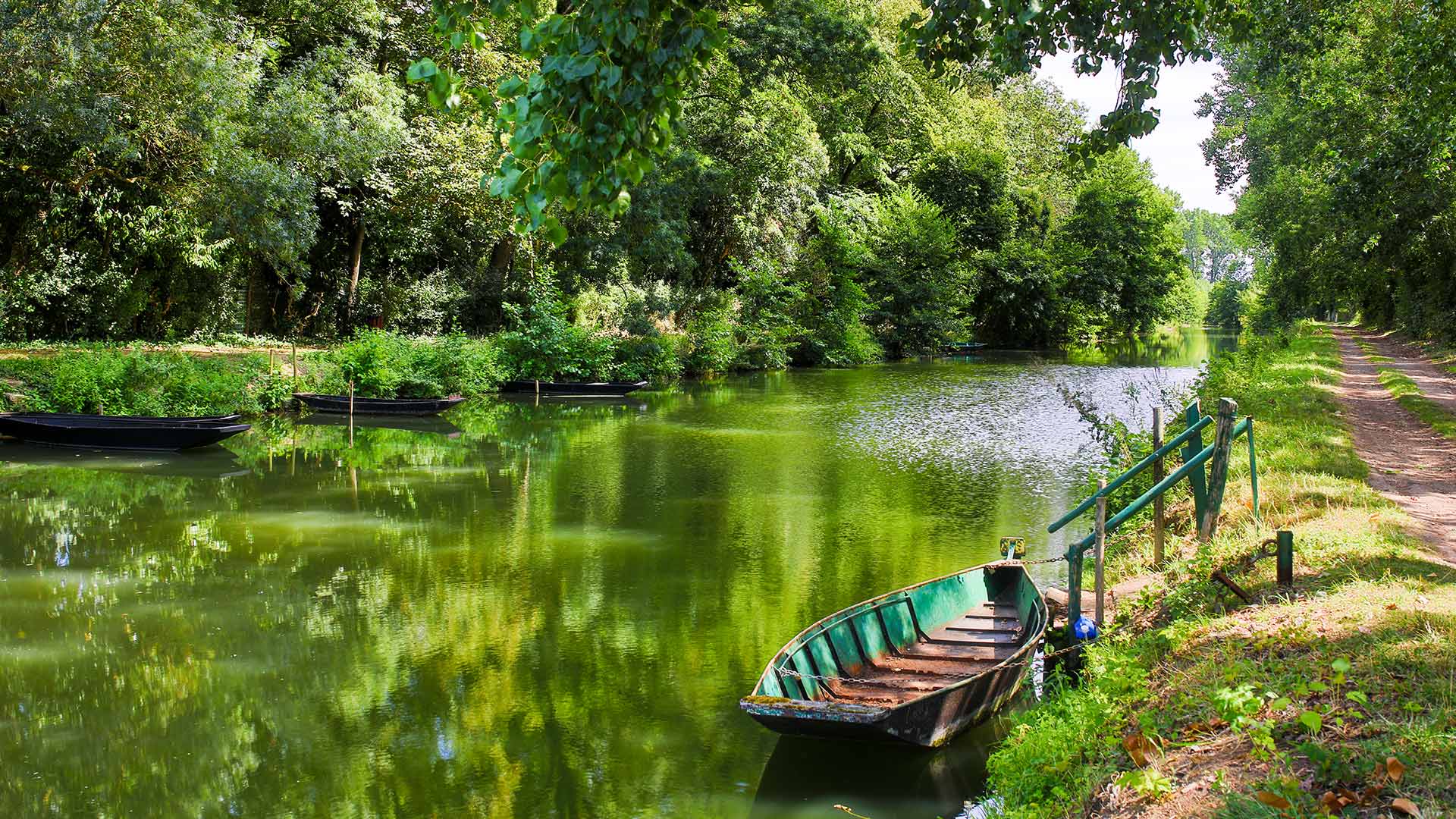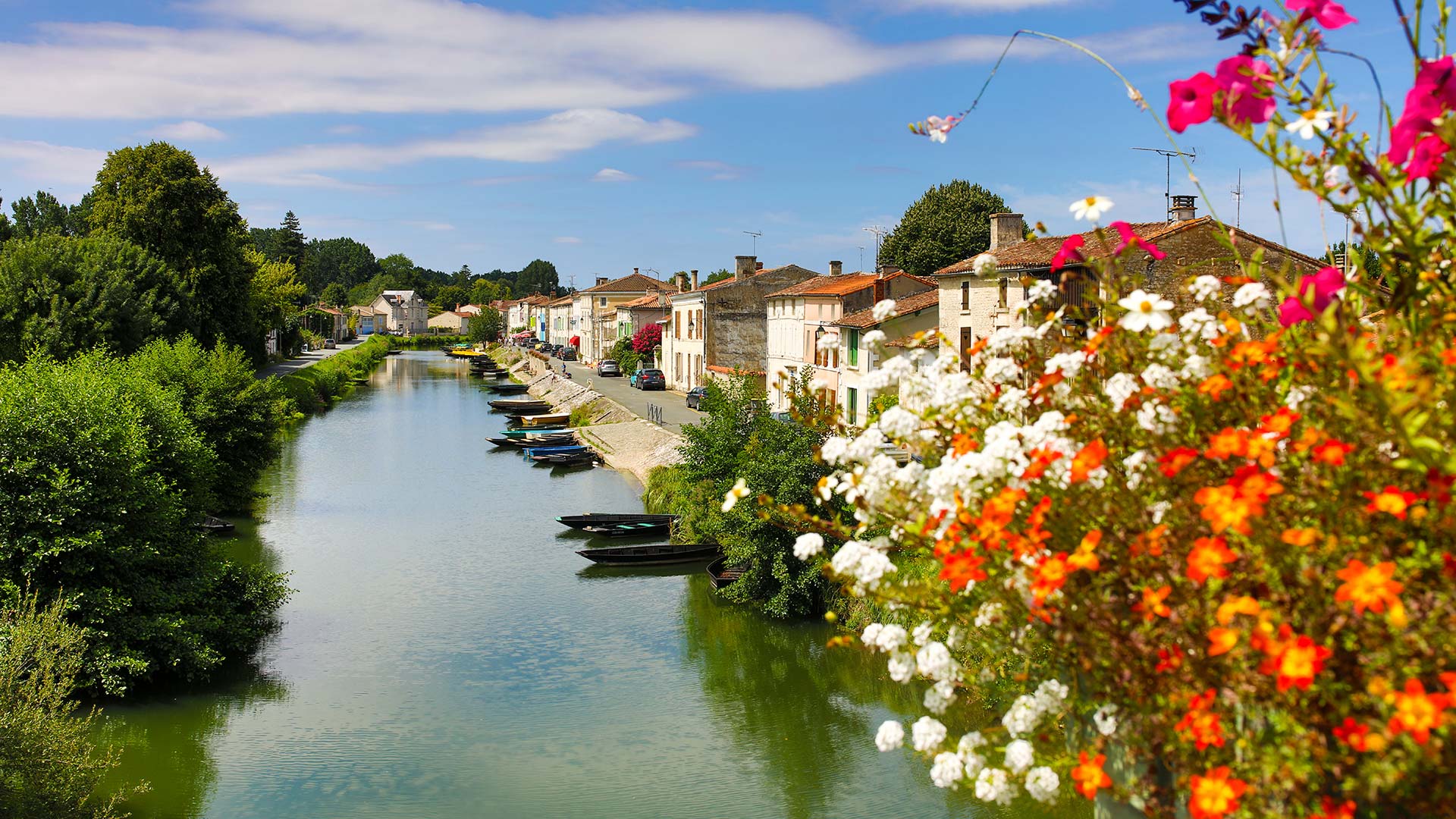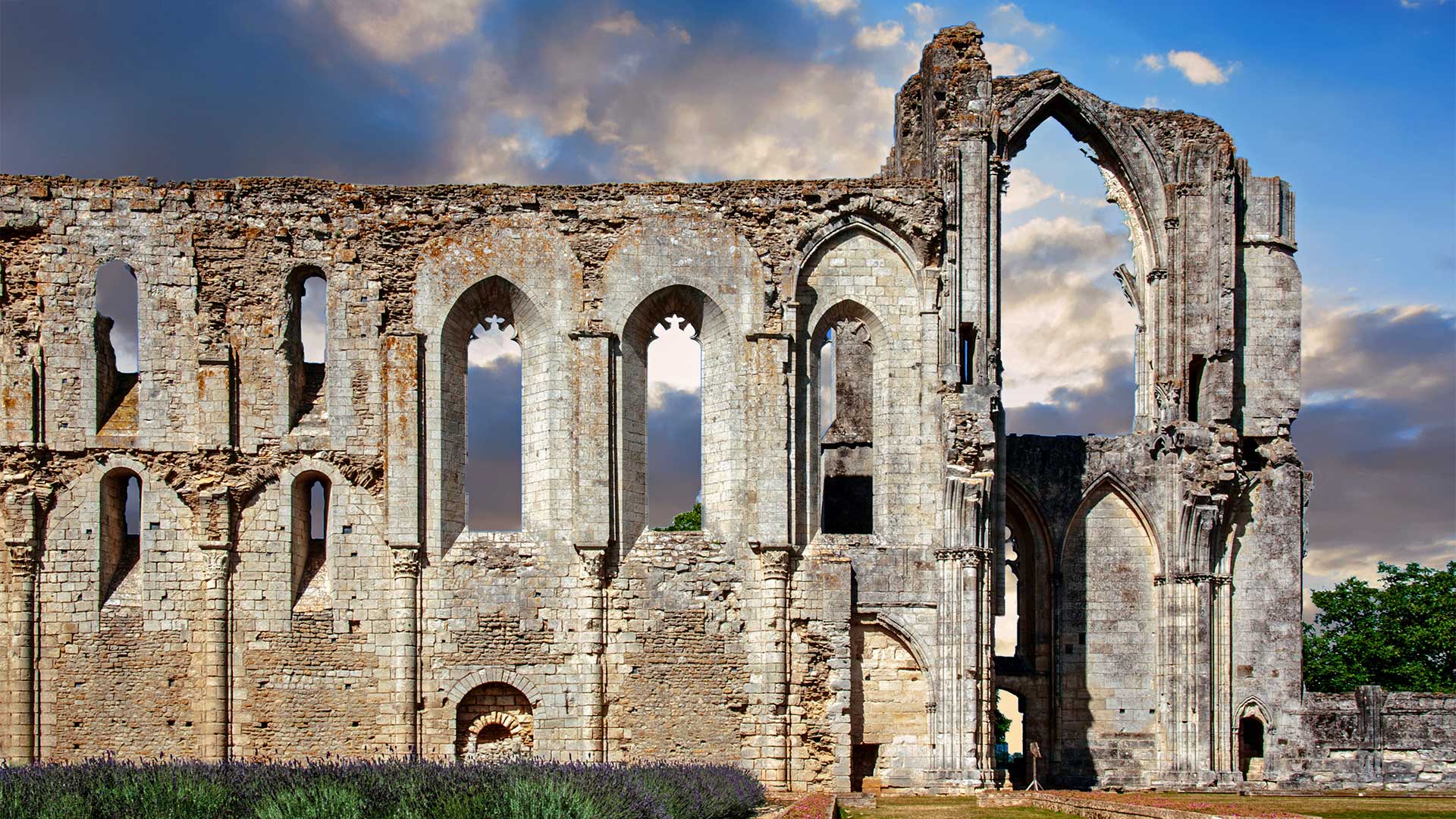Discover the Marais Poitevin, from its canals down to the beaches of the Atlantic Ocean
Discover the Marais Poitevin, from its canals down to the beaches of the Atlantic Ocean

©litchi cyril photographe/Shutterstock
From the wet marshlands down to the beaches of the Atlantic, the Marais Poitevin unfolds its unique landscapes across three stages. In a boat, on foot or by bike, you can explore the Marais Poitevin and its landscape shaped by wind and water and sculpted by man, but which still follows the cycle of the seasons.
Between irrigation canals, ash trees and dunes overlooking the Atlantic, the Marais Poitevin Regional Nature Park is a mosaic of landscapes split into three distinct worlds: to the east, the wet marshlands, with its vegetation and canals; in the middle, the “dry marsh”, with its fields and ditches; to the west, the marine marsh, lined with dykes and mudflats. From Niort to the Pointe d’Arçay, explore this 100,000-hectare area, shaped by the works of man since the Middle Ages, built out of an ancient marine gulf. As you move along, the landscape slowly evolves, until you finally reach the ocean.
The Wet Marsh, home to conch shells and pollarded ash trees
Niort, medieval gateway to the Marais Poitevin
Niort rises up on the banks of the Sèvre niortaise, dominated by the keep’s two towers, massive remains erected by Henry II Plantagenet. From the rampart parapets, you can see the town, the arms of the river and the first trees of the marsh. Below, the left bank is perfect for a stroll. Cross the Brèche, walk along the quays, past the neo-Renaissance town hall and enter the Bernard d’Agesci museum, where paintings, decorative arts and naturalist collections are on display together. A stone’s throw away, the Halles of Niort, named France’s most beautiful market in 2024, are full of goat’s cheeses, mogettes and Vendée brioches under a beautiful late 19th century metal and glass hall. You then leave the city centre and head for the banks of the Sèvre. Under the foliage, the Auberge de la Roussille welcomes you in a former lock keeper’s house. At the table, you can taste a fine local cuisine made with produce from the marsh – smoked eels, pike-perch in clarified butter, vegetables from the neighbouring plains.
Take a detour to Pierre Thonnard, a passionate craftsman who turns Niort angelica into candied sweets, jams and liqueurs. It’s a great opportunity to try the gently herbaceous aroma of this rare plant, which has been cultivated in the valley for centuries.
Coulon, capital of the Green Venice
Just 10km from Niort, Coulon is the gateway to the wet marshland on the banks of the Sèvre Niortaise. Classified as a Grand Site de France, the town is home to the House of the Marais Poitevin, housed in a former 18th century tax collector’s house. Here you can discover the agricultural and fluvial practices of this canal-riven region nicknamed the “Green Venice”: tools, flat-bottomed boats, stories from inhabitants and everyday objects bear witness to a life lived in close harmony to the water. On the way out, you can have a walk through the whitewashed houses lined with hollyhocks, where the shops feature woodwork, basketry and local produce. All year round, on Fridays and Sundays, the market takes place on the church plaza: take this opportunity to taste a goat’s cheese freshly matured just a few kilometres away!

©litchi cyril/Shutterstock
For a quiet boat trip, choose the piers at Arçais, Maillezais, Mazeau or Vanneau-Irleau rather than Coulon. There are fewer irrigation canals, the boatmen are more available and the waters are less turbid.
Arçais and Saint-Hilaire-la-Palud, an immersive time in the wildlife of the wet marsh
At Saint-Hilaire-la-Palud, the Orthonological Park “Les Oiseaux du Marais Poitevin” guides you on foot through a succession of floodplains, reed beds and peaceful canals. Some 75 species of birds nest or rest here – black storks, night herons, harriers, cattle egrets… Keep your ears open: sometimes you’ll catch the flapping of wings before a low-flying bird actually comes into view. From the port of Arçais, hop on a bicycle and take the Route du Lidon, an 18-kilometre loop through isolated hamlets, hedgerows and wet meadows, surrounded by flitting dragonflies and the quick trills of passerines.
The Marais Poitevin is perfect for exploring by bike, with white trails, back roads and signposted routes linking villages and canals. In Arçais, you can rent a mechanical or electric bike from La Bicyclette Verte and set off in complete freedom!
Maillezais, monks on the water
Maillezais Abbey is colossal, open to the sky, and one of the most beautiful places in the entire region. A former fortified Benedictine stronghold, it still bears its crypts, cellars, cloister and remnants of the ramparts. From the top, you can look out over the canals of the wet marshes; below, you can board a boat at the foot of the old moats, to ride on a network of canals fashioned by the monks as early as the 11th century. In summer, concerts, night-time shows and open-air storytelling breathe some life back into the ruins. Before setting off again, stop off at La Cabane, on the Grand Port. You’ll find troussepinette, farci poitevin, mogettes and angelica-flavoured sweets, iconic products of the Vendée and Poitevin regions.

©guy-ozenne/ Getty Images Plus
The “dry marsh” of Petit Poitou, farmlands and a hidden legacy
Chaillé-les-Marais, a history of dykes and people
Leaving behind the poplars of the wet marshes, you’ll discover a more open landscape, criss-crossed by canals and drainage ditches. Here, in the dry marshes of the Petit Poitou, farming dictates the lay of the land, but the hydraulic structures still bear witness to the patient fight against the waters. In Chaillé-les-Marais, push open the door of the Maison du Maître de Digues, housed in a 17th-century building. Within are models, old maps and drainage tools; you can explore the day-to-day life of the men responsible for maintaining the fragile balance between the land and the canals. Nearby, on L’Île Cariot, you can rent a canoe to paddle your way along the straight ditches. The water is lower, the banks are drier and the plant-life is different. Paddling low to the ground, you’ll be able to appreciate the rigorous layout of the landscape, the silence all around and, already, the first hints of a wind from the sea beyond.
Saint-Michel-en-l’Herm, spirituality and a salty horizon
Just a few kilometres from the shore, you can visit the Royal Abbey of Saint-Michel-en-l’Herm, one of the oldest Benedictine monasteries on the Atlantic coast. Founded in 682, the building has a soberly adorned vaulted chapter house and the ruins of five successive abbeys, which you can explore with an enthusiastic guide. From the heights, the view opens out over the salt meadows, the dykes of the bay and, further out, the first glimpse of the Atlantic.
The marsh by the sea, dykes, mudflats and Atlantic dunes
Your exploration of the Marais Poitevin ends at the Pointe d’Aiguillon and Pointe d’Arçay, where the land gives way to the waves of the Atlantic. On the outskirts of the bay of Aiguillon-sur-Mer, you follow a coastal path that runs along the dykes before opening out onto the mudflats. Classified as a national nature reserve, the area is home to thousands of migratory birds every year. From the observatories, you can spot avocets, black-winged stilts and Belon shelducks, in flight or standing in the waning light. Further south, you can walk to the Pointe d’Arçay from the beach at La Faute-sur-Mer. This short walk takes you through maritime pines, beachgrass thickets and shifting dunes all the way to the ocean. The beaches there are wide, perfect for swimming or a contemplative moment by the waters. Breathe in the sea air and listen to the gentle murmur of the wind: this is where the marsh ends and the open sea begins.
Birdwatching tip
To get the closest possible view of the wader birds, head for the observatories in the Aiguillon Bay at daybreak, as the tide begins to recede. Many of the birds aren’t very shy, more focused on rooting through the mud.
Feel like getting away from it all?
See our suggestions for novel trips and must-see places to visit near your home or holiday destination.